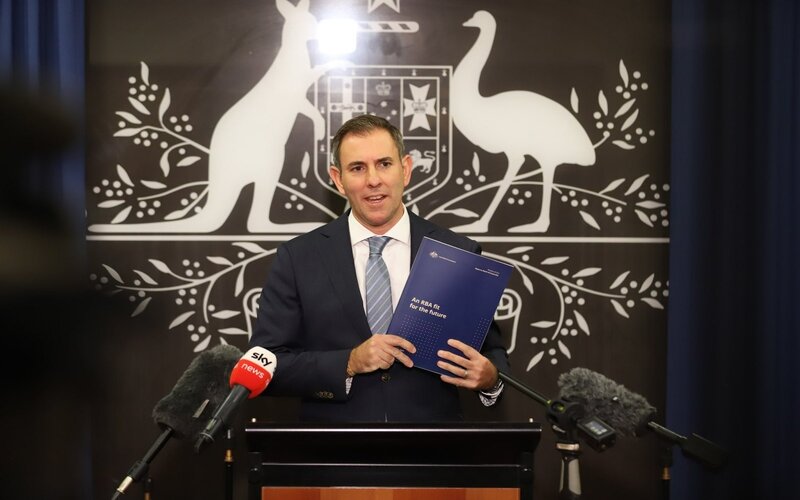Come Tuesday night, Treasurer Jim Chalmers will have lifted the lid on his second Federal Budget, with the intent to provide targeted cost‑of‑living relief that does not add to inflation, address supply side problems and make Australia’s finances more sustainable.
Economists have forecasted the deficit to be some $30 billion lower than October 2022’s budget deficit of $36.9 billion.
Put simply, a budget deficit means the cost to the government to fund its objectives outweighs revenue gathered from sources such as income and other taxes.
CommBank Chief Economist Stephen Halmarick said the 2022-23 budget deficit estimate is expected to be revised down substantially to approximately $5 billion or 0.2% of GDP.
“[This is] well below the previous estimate of $36.9 billion or 1.5% of GDP as stronger than expected nominal GDP growth this year is boosting revenue and lowering spending,” Mr Halmarick said.
Some even anticipate the Budget to potentially be in surplus, with AMP Chief Economist Shane Oliver detailing March budget data has revealed a small surplus over the past 12 months.
“This means it’s likely the budget balance for 2022-23 will be a small surplus of around $2 billion, compared to a $36.9 billion deficit projected in the October Budget,” Dr Oliver said.
“Some of this improvement will carry into 2023-24 where we expect a deficit of $25 billion, down from $44 billion forecast in October.”
Cost of living and subsidies
Alongside paying more for goods, Aussies have been faced with battling significant service inflation, with electricity prices set to continue to climb by more than 20% from 1 July.
To alleviate this, the budget will look to provide up to $3 billion from both federal and state governments in power price relief for households.
Speaking to Channel 7’s Sunrise, Treasurer Jim Chalmers noted the budget will provide help for people with their electricity bills to take some of the sting out of these price rises.
“We will [also] provide assistance when it comes to some other areas that are important for people to deal with these cost‑of‑living pressures.
“We've already pointed to childcare being cheaper, medicines being cheaper, giving people a bit of help with electricity bills. These are all important components of what you'll see on Tuesday night.”
On childcare, child care subsidy expenses are anticipated to increase by $1.4 billion or 12.35% in the budget, while medication will be cheaper with general patients able to save up to $180 a year with two months’ worth of medicines for the price of a single monthly prescription.
Further, single parents are anticipated to receive extra welfare until their youngest child turns 14 years old, up from the current cut-off of eight.
Westpac Chief Economist Alan Oster notes the government has also indicated it will seek to raise the rate of JobSeeker payments.
“Although by how much and for which age groups remains unclear – despite much speculation it will target over-55s only,” Mr Oster said.
Housing
The first home guarantee, family home guarantee and regional first home buyer guarantee will all be rejigged with expanded criteria from 1 July 2023, to help more Australians achieve home ownership.
For those looking to take advantage of the schemes, this will see meaning behind the definition of a ‘couple’ altered from married or de-facto relationships to any two eligible individuals.
This means first home buyers looking to take advantage of the scheme can do so with a sibling, friend, or even a parent.
Under the schemes, the Federal Government acts as guarantor allowing Aussies to purchase a home with a 5% deposit while avoiding paying lender’s mortgage insurance (LMI).
The budget will also seek to boost build to rent projects across the nation as a means to boost housing supply.
Prime Minister Anthony Albanese announced this will aim to be achieved by increasing the depreciation rate from 2.5% to 4% per year for eligible new build to rent (BTR) projects where construction commences after the budget date of May 9 2023.
Alongside this, the Federal Government will also reduce the withholding tax rate from managed investment trusts to foreign residents on income from newly constructed residential built to rent properties after July 1 2024 from 30% to 15%.
PRD Chief Economist Dr Asti Mardiasmo said on the BTR front, the move is celebrated as it increases the opportunity for BTRs in Australia, however the maturity of the BTR asset varies.
“A good example here in Brisbane is that there are only two pilot projects, whereas in Melbourne and Sydney it is more mature,” Dr Mardiasmo told Savings.com.au.
“Further our version of BTR is that of a stacked apartment, as opposed to the UK and USA version of BTR – which is small houses or family homes.
“Therefore there is a big demographic target discrepancy, and for our BTRs to be truly effective there is a need for a re-haul on product offering to ensure it appeals to a wider demographic and can accommodate long term renters as they move towards different stages of life.”
Dr Mardiasmo notes there is also anticipated to be more support for social and affordable housing in the budget, however the devil is in the detail in terms of the realities of delivering such projects.
“If we look at the second round of the Queensland Housing Investment Fund, yes social and affordable housing is prioritised, however you must already have an acquired private land site or a proposed asset to purchase (and then re-purpose)," she said.
“You have to also have a strong partnership with Community Providers. These combined can be tricky.”
Tax cuts
H&R Block Director of Tax Communications Mark Chapman said the most unloved tax cuts in the world are finally due to take effect from 1 July 2024.
“Pundits are mostly united in believing that the Liberal-era tax cuts (which heavily favour the highest income earners) are unaffordable and unfair and opinion polls suggest that most voters agree,” Mr Chapman said.
“But Labor is sticking with its election commitment to introduce them for now – and don’t expect this Budget to contain any surprise announcements reversing that!
“It may well be that these tax cuts never see the light of the day – at least in their current form – but the government has time on its side and will probably make an announcement when it becomes clear which way the economy is going, later this year or early next year.”
Research published by the Grattan Institute revealed stage-three income tax cuts will cost the budget about $20 billion a year from mid 2024, rising to $31 billion by 2030.
However Australian National University modelling in 2020 estimated the hit to be a nominal $54 billion overall, with inflation totally erasing the cost by 2029. The modelling did not appear to take into account inflation above 7.0%, which presumably erases the cost faster.
The elimination of the 37c tax bracket also prevents some 1.9 million workers earning between $88,000 and $120,000 from creeping into this higher bracket through below-inflation wages growth.
Image by Jim Chalmers via Facebook



 Denise Raward
Denise Raward
 Harry O'Sullivan
Harry O'Sullivan

 Harrison Astbury
Harrison Astbury
 Aaron Bell
Aaron Bell

